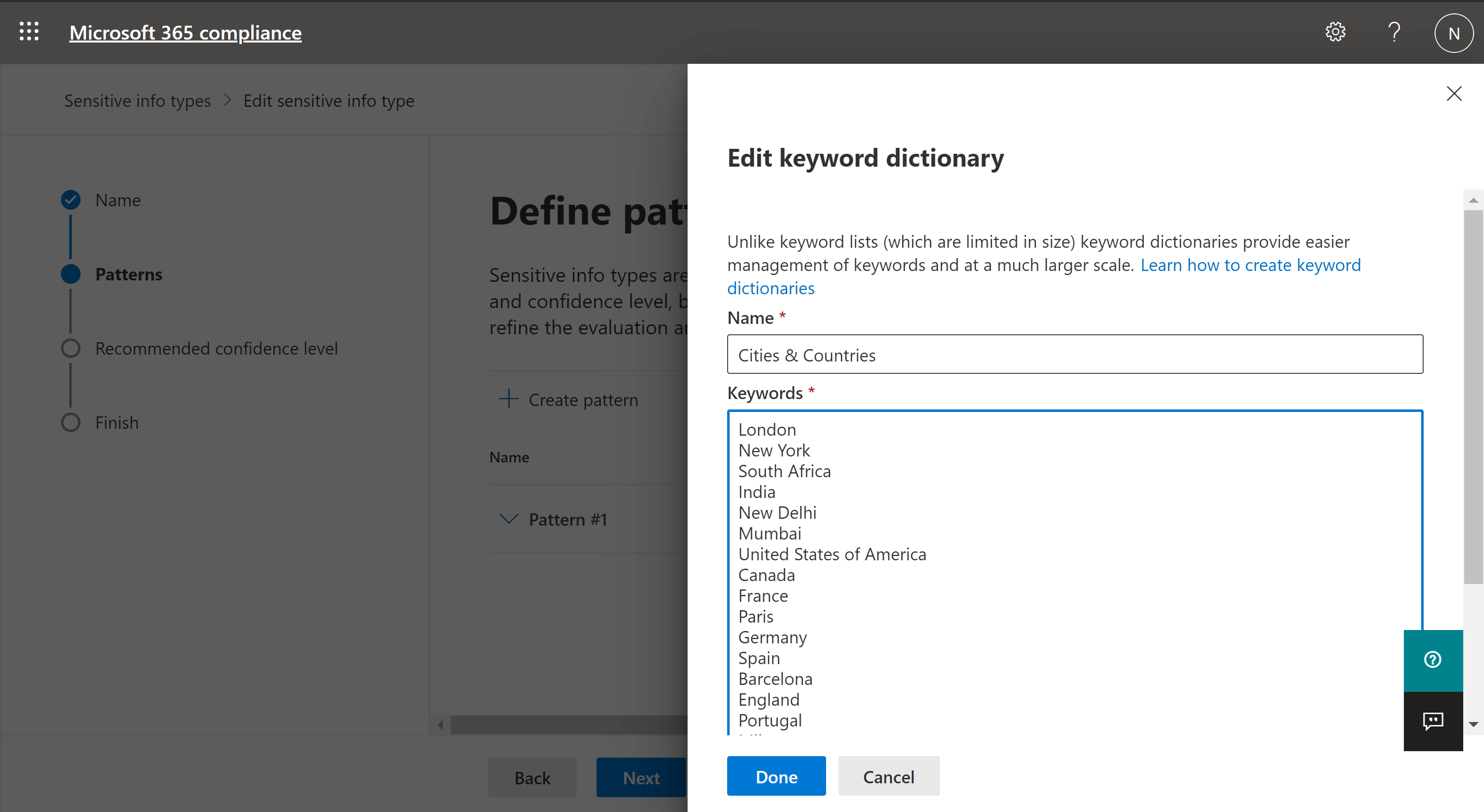Announcing new options for custom sensitive information types
As part of your data classification efforts in the Microsoft 365 compliance center you can now customize built-in classifiers (sensitive information types) to meet your organization’s needs. We are rolling out some minor feature updates to enhance this customization experience.
When this will happen:

Rollout will begin mid-June and is expected to be complete by mid-July.
How this will affect your organization:
The following feature updates will be made available to support customization of your sensitive information types (SITs):
Ability to edit custom dictionaries. You will now be able to edit any custom dictionaries that you have created for SITs used by your organization.

- Custom checksum validator
- Date validator
- Luhn check
- Australian Medicare number
- New Zealand National health index number
- New Zealand IRD/tax number
- People’s Republic of China ID
- Hong Kong ID
- Denmark personal identification number
Ability to define Proximity at pattern and element level. While creating or customizing a SIT, you can now define the proximity at pattern or element level. This enables you to define a different proximity for each support element or a different proximity for patterns of varying confidence levels.
What you need to do to prepare:
You might want to notify your users about this new capability and update your training and documentation as appropriate.

Learn more
Message ID: MC259305


 HANDS ON tek
HANDS ON tek
 M365 Admin
M365 Admin








No comments yet